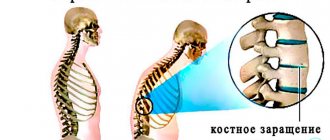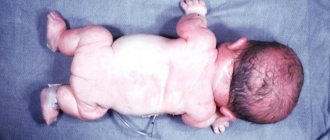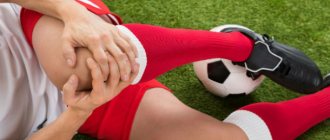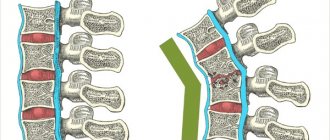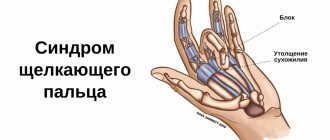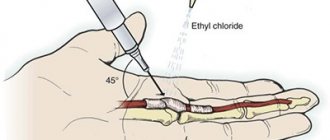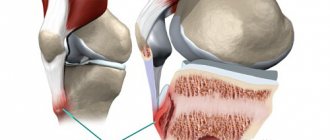What a beautiful name – Scheuermann Mau disease. And most importantly, how mysterious! But it is not the reason for the appearance of this disease, not its manifestations and complications that worry people (mostly the mothers of conscripts), but how to avoid the army with such a disease. In general, for unknown reasons, a logical connection arose Scheuermann-Mau disease and the army Some, while achieving positive results in treatment in the first stages, do not see the point in further treatment if the child is subsequently drafted into the army. Others stubbornly collect documents, take x-rays, stay in the hospital for a month, visit various institutes, and all for what? For the Military Commissariat Commission. But do they think about health?
What is Scheuermann-Mau disease?
The disease got its name from the Danish doctor Scheuermann, who first discovered this disease in 1921 and devoted the rest of his life to looking for a reliable way to get rid of it.
Essentially, Scheuermann's disease is a deformation of the cervicothoracic spine . In a normal (healthy) state, this section looks like the letter S, i.e. the cervical and lumbar spine have a slight tilt backward, and the thoracic tilt forward.
This simple design helps us maintain normal balance. With Scheuermann's disease, the angle of inclination becomes deeper and this balance system is disrupted.
The patient begins to experience severe pain and loses mobility. In addition, deformation of internal organs begins, as the spinal column is deformed. The musculoskeletal system begins to gradually collapse.
Clinical picture of the disease
At the initial stage, the disease rarely manifests itself. There are some subtle signs that either an experienced doctor or a paranoid person can notice.
The disease becomes more noticeable a little later, when the following symptoms begin to appear::
- visually noticeable violation of the patient’s posture;
- pain in the cervical and thoracic spine, as well as between the shoulder blades;
- arching of the spinal column in the thoracic area;
- scoliosis.
With Scheuermann-Mau, rounding of the spine occurs in the thoracic region near the spine
In the early stages of the disease, pain is not so severe. Usually their intensity increases when the deformation of the spinal column is already pronounced and visible to the naked eye.
Typically, kyphosis progresses slowly and is accompanied by lateral scoliosis in most patients.
With Scheuermann's disease, the back becomes stooped and rounded. In later stages, a hump begins to form and the chest becomes unnaturally sunken. The disease is also accompanied by the development of neurological symptoms.
The disease has several periods, each of which in turn has a set of specific symptoms and complications . There are three such periods in total:
- Latent period (in children aged 7 to 14 years) - this period is characterized by the absence of any complaints from the patient. Sometimes the patient may be bothered by minor pain in the spinal column due to physical stress;
- The period of early changes (in young people from 15 to 20 years old) - this period is characterized by pain in the neck, chest and between the shoulder blades. Sometimes there are also complaints of pain in the abdominal muscles. If kyphosis is severe enough, then subacute or acute compression of the spinal cord may develop, as well as an intervertebral hernia. Any physical activity causes severe pain. During this period, skeletal changes can still be prevented;
- The period of late neurological complications (people over 25 years of age) - this period is characterized by serious complications and changes in the structure of the skeleton. Rapidly progressing osteochondrosis, intervertebral hernias, as well as spondylosis and spondyloarthrosis in the cervical spine may be present.
International Classification of Diseases code
Scheuermann's disease is included in group M42 (Osteochondrosis of the spine). Under the same code are Calve's disease and juvenile osteochondrosis of the spine.
Prevalence and significance
Doctors say that boys most often suffer from juvenile curvature. Despite its proximity to a disease such as scoliosis, Scheuermann-Mau disease occurs in approximately 1-5% of all adolescents . Most often, this disease occurs in boys; in girls, this disease manifests itself much less frequently.
The disease is diagnosed when the body is tilted from 45 to 75 degrees. In this case, there is a huge load on the vertebrae and, as a result, changes and deformations in these vertebrae lead to stooping and the formation of a hump in the future.
Also, very often in patients with advanced disease, an intervertebral hernia may form, thickening of the ligaments and disruption of the functioning of internal organs. All these consequences can lead to disability at best, and death at worst.
Video: “What is Scheuermann-Mau disease”
Features/Clinical manifestations
X-ray in lateral projection
According to Sorenson, Scheuermann's kyphosis is characterized by the following criteria:
- Three or more adjacent vertebrae have a wedge deformity of ≥ 5 degrees.
- There are no congenital pathologies of the spine, as well as infectious diseases and injuries.
A teenager with Scheuermann's kyphosis will experience:
- Cosmetic defect/postural deformity.
- Subacute chest pain is likely, usually without a specific trigger. The pain increases with activity and decreases with rest.
- Most often, the deformity is detected in early and middle adolescence. It is usually noticed either by the child himself or his parents, or it is detected during school medical examinations.
- Physical examination reveals a rough, hyperkyphotic curve with pronounced curvature.
- Hyperkyphosis does not disappear either during extension or in the supine or abdominal position, which only confirms the high degree of rigidity of this deformity.
- Cervical or lumbar hyperlordosis, scoliosis, and tension in the hamstrings may also be detected. Although neurological disorders are rare in Scheuermann's disease, a thorough neurological examination of the patient is recommended.
- Muscle stiffness and fatigue may occur, especially at the end of the day.
- Reduced flexibility of the torso.
- In severe cases, heart and lung function may be impaired or severe neurological symptoms may occur. These symptoms are extremely rare.
Patients may also complain of pain that prevents them from exercising, working, or doing daily activities. The disease can also cause discomfort due to its aesthetic component.
During the examination, it is possible to detect skin pigmentation in the area of greatest curvature due to friction against the backs of chairs. The natural history of the disease remains an open question, with many conflicting reports regarding the severity of pain and physical disability.
Causes of the disease
Scheuermann-Mau disease can occur due to several factors. Therefore, it is impossible to name exact reasons for its development.
Factors can be grouped and presented as follows :
- Hereditary factors . As a rule, in this case at least one of the parents has this disease;
- Traumatic injuries to the growth plates of the vertebrae of the thoracic spinal column;
- The presence of various types of muscle tissue diseases in the paravertebral zone. This reason leads to the destruction of the main skeleton frame;
- Failure in blood circulation and subsequent necrosis of intervertebral discs . The vertebrae begin to take on a wedge shape. Scheuermann himself called this the main reason and relied on it when diagnosing the disease in patients;
- Uneven growth processes during adolescence;
- Osteoporosis in adolescence . It usually develops for unknown reasons. Due to the sparseness of bone tissue, fractures of the vertebral bodies occur, which also leads to their wedge-shaped deformation.
Survey
- The main distinguishing feature of patients with Scheuermann's disease is thoracic kyphosis.
- Often, along with kyphosis, the patient is found to have cervical or lumbar hyperlordosis.
- Cervical lordosis can be increased with head protraction. The shoulders are mostly directed forward.
- These disorders may be accompanied by mild or moderate scoliosis.
Patients with Scheuermann's disease usually have well-developed muscles, in contrast to patients with postural kyphosis.
The examination consists of:
- Posture Assessment: Body position is assessed from the front, back and side.
- Neurological screening: in rare cases, compression of the spinal cord along the posterior surface of the vertebral bodies may occur at the site of greatest curvature. This may result in symptoms of impending paraplegia with clonus and hyperreflexia.
- Adam's forward-bend test: Scheuermann's kyphosis may be accompanied by scoliosis.
- Muscle Shortening Test: In Scheuermann's disease, the following muscles may be stiff: the pectoralis major, hamstrings, suboccipitals, and hip flexors. Contractures in the shoulder and hip joints are possible.
- Range of motion in the joints of the lower extremities and spine.
- Muscle Strength Test: The strength of the abdominal, core, trunk extensors, and gluteal muscles should be tested.
Consequences of the disease
In order to fully understand all the consequences of this disease, remember that the spine is a central organ: the most important blood vessels and nerve networks pass through it. It is through the spine that all organs of our body are controlled. Therefore, its deformation and disturbances in its work will lead to irreversible changes in all internal organs of our body and the musculoskeletal system. This in turn will lead to partial or complete loss of ability to work, and in advanced cases, death.
Forms
The latent form develops in a child aged 8–14 years. Symptoms do not appear. If pain occurs, it is not very disturbing; the patient ignores it. It becomes uncomfortable after the patient does physical work. But deformation occurs at this stage every day. If a person is carefully examined, pathological changes will be revealed. Suspicion is raised by a very straight back with increased lumbar lordosis; kyphosis of the thoracic spinal segment may also increase.
Ankylosing spondylitis in men
The patient will not be able to reach his feet with his hands. An increased angle of the thoracic vertebral region is also present when there is a desire to straighten up. If a young person turns 15–20 years old, the following form of pathology will appear.
Pain syndrome of the lower back and lower thoracic spinal region is a frequent concern. Hernias form between the vertebrae. The severe course is aggravated by spinal compression. In the late form of the disease, osteochondrosis with hernias has already formed, spondylosis, spondyloarthrosis changes with ossifying ligamentosis appear.
This condition is observed in adults. The processes of dystrophy and degeneration lead to compression of the nerve roots. The mobility of the limbs will decrease, they will become less sensitive. The vertebral segments of the thoracic and lumbar regions can often be affected.
Diagnosis of the disease
Did you know that...
Next fact
Typically, the diagnostic process for this disease takes place in the second or third stage of the disease, since it is at this time that the patient begins to experience obvious symptoms.
The first step in diagnosis is a thorough examination of the patient.:
- whether there is curvature of the spinal column;
- is there any pain when palpating;
- Is there local tension in the back muscles?
The doctor will always ask whether you have had any back injuries, what kind of lifestyle you lead, and whether your relatives have had any serious illnesses (including Scheuermann’s disease).
After such an examination, you will be sent for x-ray diagnostics, which will allow you to see the level of deformation and the stage of development of the disease.
This is what Scheuermann-Mau disease looks like on x-ray
If after the first two operations an accurate diagnosis is not identified, then to complete the picture you will have to undergo electroneuromyography, MRI and CT . After this, the clinical picture will be as complete and understandable as possible.
Prevention
To prevent the development of this disease in a child, parents must constantly monitor his posture and not allow the child to slouch. At the age of twelve, the child should be examined by an orthopedist, who can determine the earlier onset of the disease.
Those teenagers diagnosed with Scheuermann-Mau disease should not engage in sports where the main load falls on the spine. Swimming lessons are recommended. Parents should ensure that they properly organize a workplace for sitting at the computer and choose a suitable bed for their child. The mattress should be hard and even; it is best to choose an orthopedic mattress for your child.
Treatment of the disease
As is the case with any other disease, the success of its treatment depends on several factors: timely detection, an integrated approach, responsibility and patience of the patient.
To treat Scheuermann-Mau disease, a complex of conservative methods is used that can help in the fight against the hated disease:
- Measurements are taken from the patient, and a special orthopedic corset is selected based on these measurements, which must be worn most of the time;
- physical therapy complexes are also used, selected strictly by your attending physician and no one else;
- physiotherapy;
- massage, which should only be performed by a professional;
- you need to select appropriate furniture for the patient that would help maintain correct posture during work/study/rest;
- manual therapy;
- medications (selected strictly by your doctor).
The most effective way to get rid of the disease is still physical therapy . Physiotherapeutic procedures are added to it, as well as therapeutic massage courses and therapeutic mud applications.
Most often, in adolescence, manual therapy is prescribed for curvature of the spine. When selecting furniture, take into account, firstly, the patient’s age, and secondly, his height and weight. You need to sleep on a thick mattress (it is advisable to choose a high-quality orthopedic mattress).
Manual therapy is prescribed in cases where the displacement of the vertebrae is significant . The same applies to medications: medications are prescribed only when the patient’s body does not have enough of its own resources to maintain bone density.
It is also often recommended to supplement the therapeutic therapeutic complex with different sports, for example swimming , jogging or walking. Active games and jumping exercises of various kinds are strictly prohibited for this disease.
For extreme degrees of deformation and serious neurological disorders, surgical intervention is indicated. To prevent this from happening, you need to deal with the disease in a timely and responsible manner.
Video: “Treatment of Scheuermann-Mau disease”
List of sources
- Orthopedic neurology (vertebroneurology): a guide for doctors / Ya.Yu.Popelyansky. — 5th ed. - M.: MEDpress-inform, 2011;
- Zaidman A.M., Fomichev N.G., Kalashnikova E.V. and others. Scheuermann-Mau disease: clinical picture, morphology, biochemistry, genetics, treatment. - Novosibirsk, 2002;
- Ivanov S.N. Osteopenic syndrome in the symptom complex of Scheuermann-Mau disease: abstract. dis. ...cand. honey. Sci. - St. Petersburg, 2005;
- Ulrich E.V., Mushkin A.Yu. Vertebrology in terms, figures, drawings. - St. Petersburg, 2002.
